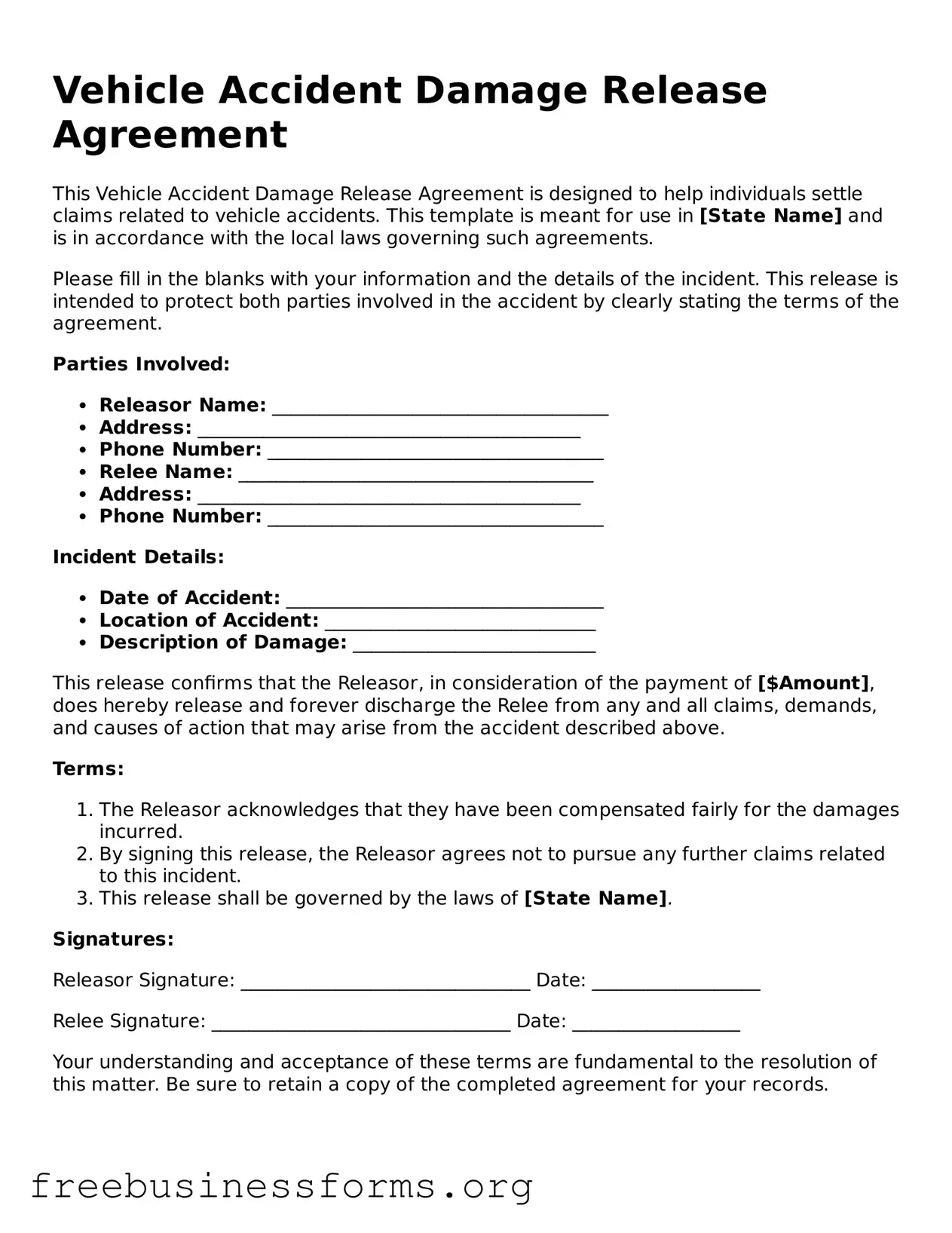Vehicle Accident Damage Release Agreement
This Vehicle Accident Damage Release Agreement is designed to help individuals settle claims related to vehicle accidents. This template is meant for use in [State Name] and is in accordance with the local laws governing such agreements.
Please fill in the blanks with your information and the details of the incident. This release is intended to protect both parties involved in the accident by clearly stating the terms of the agreement.
Parties Involved:
- Releasor Name: ____________________________________
- Address: _________________________________________
- Phone Number: ____________________________________
- Relee Name: ______________________________________
- Address: _________________________________________
- Phone Number: ____________________________________
Incident Details:
- Date of Accident: __________________________________
- Location of Accident: _____________________________
- Description of Damage: __________________________
This release confirms that the Releasor, in consideration of the payment of [$Amount], does hereby release and forever discharge the Relee from any and all claims, demands, and causes of action that may arise from the accident described above.
Terms:
- The Releasor acknowledges that they have been compensated fairly for the damages incurred.
- By signing this release, the Releasor agrees not to pursue any further claims related to this incident.
- This release shall be governed by the laws of [State Name].
Signatures:
Releasor Signature: _______________________________ Date: __________________
Relee Signature: ________________________________ Date: __________________
Your understanding and acceptance of these terms are fundamental to the resolution of this matter. Be sure to retain a copy of the completed agreement for your records.
